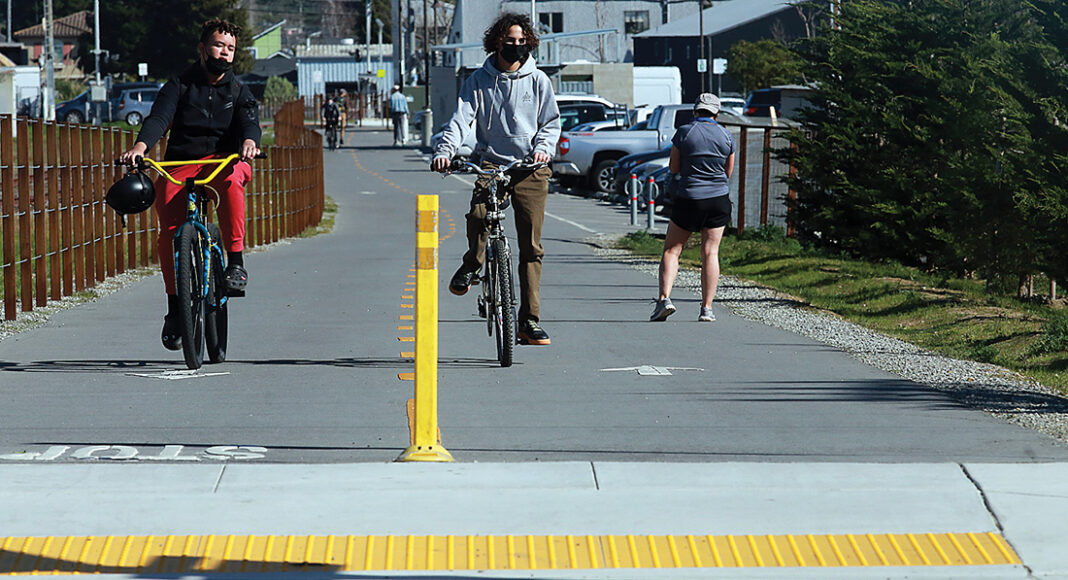Re: “Split RTC Vote Derails Rail Trail Plans” (GT, 4/1): The No Way campaign describes tearing out the rails on the Santa Cruz Branch Line as a bad thing, a deceptive thing, an almost evil proposition.
It might be worthwhile to look at what we actually have in our rail transportation corridor.
According to the Union Pacific track charts, a rail-by-rail survey produced in 2001, the Branch Line rails are “second hand.” This is not unusual for branch lines: rails from main lines are downcycled to the less-profitable branch lines. These track charts give the age of each rail, under the heading of “Surfacing & Lining.” According to these charts, our earliest rails date from around 1910, miles and miles from the nineteen-teens, and the newest, a short stretch near California Street in Santa Cruz, is dated 1996. Even on newer bridge structures, second-hand rails were used.
The Association of American Railroads says that “the lifespan of rail averages 50-60 years.” Our rails are older, most older than a century, and even they are second hand. They are federally ranked “excepted track.” “Excepted track” is track that is limited to no more than ten miles per hour. Keeping these failing rails will make for a long commute on the Coast Connect.
In 2018, the Regional Transportation Commission sponsored a speaker series called “Innovations in Transportation.” One of the speakers was Kurt Triplett, the City Manager of Kirkland, Washington. Kirkland had recently converted an unused rail line through railbanking to a greenway trail as an interim transportation solution. It is beloved by the community and embraced by the politicians.
In the question period following the presentation, RTC Commissioner Mike Rotkin opined that in order to preserve the transit option here, we should “just leave the rusty old track that’s not going anywhere.” Triplett replied: “The wonderful thing about the interim solution is that it’s cheap and it’s cost effective and it’s quick. We did it really fast, and in fact, on the salvage part of the ties and the rails you actually make some money on the thing.”
“Just leave the rusty old track that’s not going anywhere” is not No Way’s official campaign slogan, but it is its result. It is inaction, a complete locally originated climate cop-out. Railbanking, while it sounds passive, is our most assertive action to preserve our public transit options. If we do not railbank, we threaten the integrity of the rail right-of-way and its continued public ownership.
We’re having an election because our local transportation politics is at stasis. We can wait even longer for a “someday” solution, or we can act on the immediately possible. The adage “don’t let the perfect be the enemy of the good” is our way forward now.
Greg Becker
La Selva Beach
These letters do not necessarily reflect the views of Good Times.To submit a letter to the editor of Good Times: Letters should be originals—not copies of letters sent to other publications. Please include your name and email address to help us verify your submission (email address will not be published). Please be brief. Letters may be edited for length, clarity and to correct factual inaccuracies known to us. Send letters to le*****@go*******.sc














This is backward thinking really, No other transit solution is available to Us, the real solution is rail with trail and metro connections and rideshare. Not just a trail for a few locals. Get real. build the trail and fix the rails.